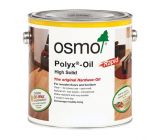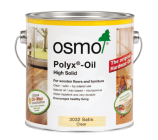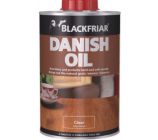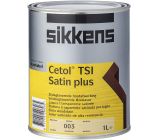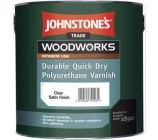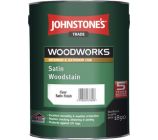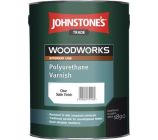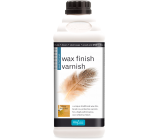
Interior Wood Paint
-

Osmo Polyx Oil Rapid
From:£35.95(inc VAT)multiple sizes -

Osmo Polyx Oil
From:£32.95(inc VAT)multiple sizes -

Blackfriar Danish Oil
From:£9.49(inc VAT)multiple sizes -

Sikkens Cetol TSI Satin Plus
From:£29.95(inc VAT)1 colour -

Johnstone's Quick Dry Polyurethane Varnish
From:£10.95(inc VAT)multiple sizes -

Johnstone's Satin Woodstain
From:£15.95(inc VAT)13 colours multiple sizes -

Johnstone's Polyurethane Varnish
From:£8.95(inc VAT)multiple sizes -

Polyvine Wax Finish Varnish
From:£24.95(inc VAT)multiple sizes
How to treat wood for indoor use
Before painting indoor surfaces, you need to prepare the wood. Prior to starting, clear any furniture out of the way and cover your surfaces and flooring with protective sheets to prevent dust/paint from landing on them.
Examine the wood and fill any holes/cracks with wood filler, scraping off any excess once the filler has mostly but not completed dried. Once fully dry, sand down any lumps and bumps you come across to make the surface as smooth as possible. Lightly brush away any dust and wipe the dry surfaces clean using a damp cloth. Use a wood primer on unpainted wood to ensure the paint adheres to the surface better. You could also use a wood oil to add an extra protective layer, and we particularly recommend this if you are painting a wooden floor. Once fully dry, you can move onto the painting stage.
How to paint interior wood
To make sure you only add paint to the surface that you want to paint, be sure to go around and cover the edges with masking tape that will leave you with clean lines when removed. This is particularly important if you are painting skirting boards, trim, or window panes! If the wood you are painting has had a primer applied to it, or been painted previously, you should first apply an undercoat paint to protect the wood and make it more receptive to adhering with the main coats of paint you want to apply. Water and solvent based undercoats are available, and it’s best to match the colour of your undercoat to the main paint colour.
To apply the main coat, you’ll want to apply at least two coats to keep the colour brighter for longer. We suggest using a water-based paint where possible, as this will avoid the smell that comes with solvent based paints. Using a suitably-sized brush, apply the paint in thin layers (thick layers risk the paint running or clumping together) and brush along the wood grain. Leave until fully dry before applying your second paint.
How to stain interior wood
You can stain wood using any number of tools - brushes, rollers, sprays, or even an old cloth will get the job done. To get a quality finish from your wood stain, you should apply a decent wet layer with your chosen tool and wipe away any excess before it has a chance to dry fully. For staining interior wood, we recommend using a product like Johnstones Woodstain which comes in a variety of finishes to suit any room.

